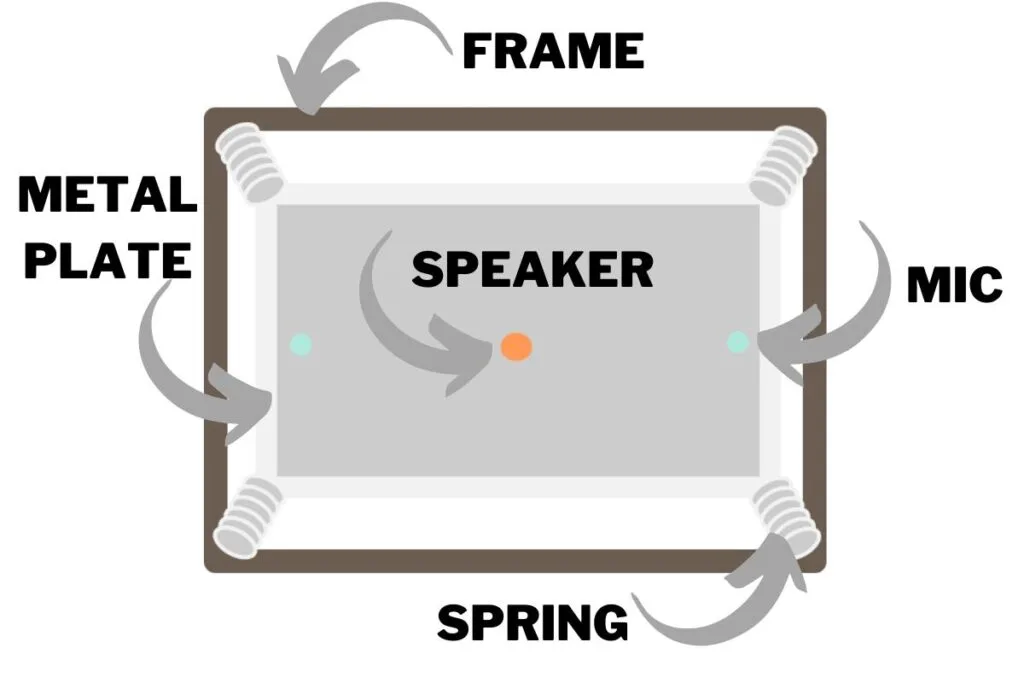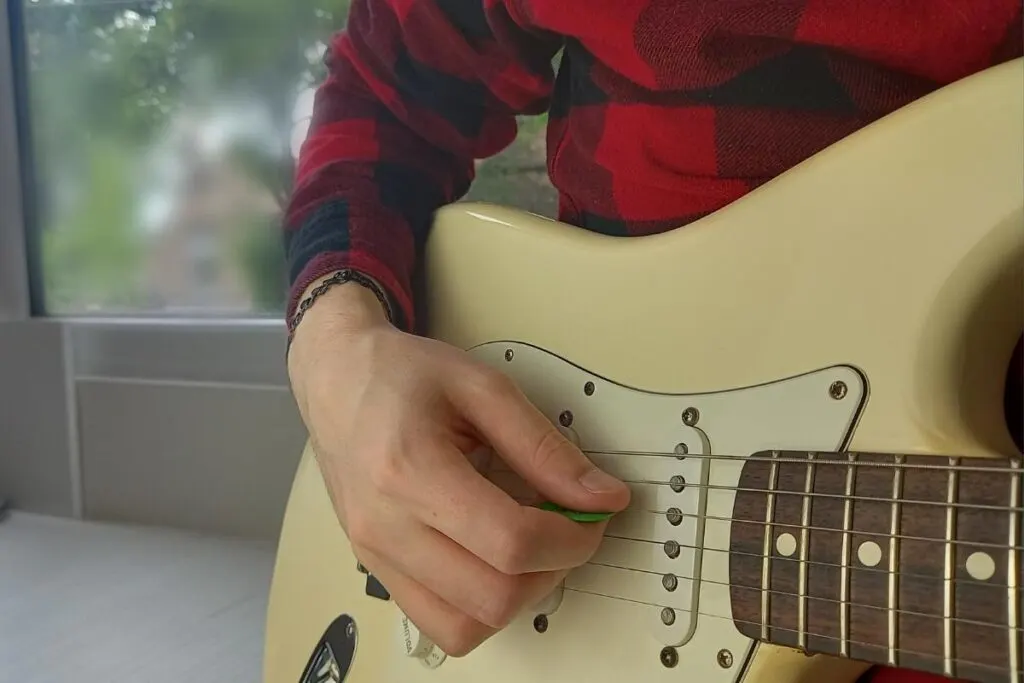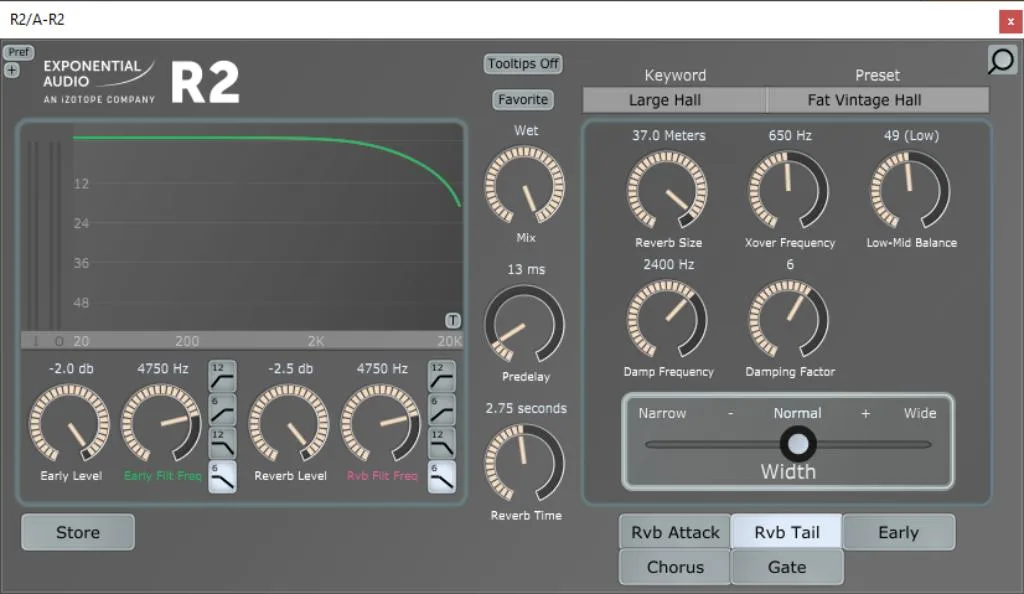Plate reverb is one of the most important types of reverb available to music producers. It’s known for its bright, metallic tone and has been used on countless classic albums.
In this article, I’ve covered what plate reverb is, what it sounds like (with original audio recordings), as well as some common examples of how it’s used in music production. Finally, I’ve included some of my recommended plate plugins (as well as my favourite free plugin!).
By the end of this guide, you’ll know everything you need to about plate reverb, and have all the tools you need to start using it in your tracks!
What is plate reverb?
Plate reverb is an effect that artificially recreates the sound of audio bouncing around a room.
Normally, you’d need a large space to create natural reverb, like a hall. When you make a noise, the sound waves bounce off the walls, creating a long echo-like effect. Plate reverb was created as a space-saving way to create this effect without needing a huge, empty room in a recording studio.
It works by suspending a metal plate inside a frame using springs in each corner (think of it a bit like a trampoline on its side).

A small speaker is fixed pointing to the metal plate which vibrates when the speaker makes a sound. The vibrations ripple through the metal plate and reflect back-and-forth off the sides, just like dropping a stone into a still pond. The vibrations are recorded by a surface mounted microphone. This signal, which is the “reverb” effect, is then output to a mixing desk.
The most famous example of a plate reverb unit is the EMT 140, which is featured in recordings by legendary artists like The Beatles and Pink Floyd.
Nowadays, most of us are using digital reverb plugins instead of these giant pieces of gear. These plugins (or “VST’s”) replicate the specific tonal style and effect of plate reverb.
So, “plate reverb” now refers more to a specific sound of reverb than the physical gear and process itself.
What does plate reverb sound like?
I’d describe plate reverb as sounding bright and tight, with a slight metallic edge and a balanced decay.
It rolls off a little of both the high and low-end frequencies but adds “air” to a track, making instruments or vocals sound brighter. As with any reverb, the high-end frequencies fade further with each repetition.
It’s much narrower and more artificial sounding compared to natural reverbs, like chamber, hall, or room reverb (and plugins that model them).
To show you what it sounds like, I’ve recorded the below examples using the “R2” plugin by Exponential Audio.
Here’s a drum kit with no reverb:
And here’s the drum kit with the plate reverb added:
As you can hear, it adds plenty of atmosphere and space to the drums, while giving that little bit of metallic brightness.
For reference, here’s the same drum track with a chamber reverb added (all other settings left the same):
If you listen closely, you’ll notice that the chamber reverb sounds more natural and uneven in the way it decays. It’s much “boomier” and has less shine than the plate.
As with most plugins nowadays, you can drastically change the sound of your reverb, like adding predelay, or filtering out the high end frequencies. But, the key characteristics of plate reverb are its balanced, even decay and subtle metallic edge.
Why does it sound artificial?
So, why does plate reverb sound artificial compared to natural reverb? Even when they’re both modelled by a digital plugin? Well, there’s a few pieces to this puzzle.
Firstly, plate reverb doesn’t normally have a “predelay”. Predelay is the short gap between the end of a sound and the beginning of the first reverb sound, when the sound waves bounce off the walls and reach our ears. While it’s a short amount of time, usually milliseconds, it’s enough for our brains to get an idea of the size of a room. When there’s no predelay, it sounds odd to us.
Secondly, it has a balanced decay, meaning the reverb fades out in an even way. This is another sign to our brains that it’s not natural. Naturally occurring reverb is messy. Sound waves bounce around a room unevenly, hitting surfaces with different shapes and materials, causing different frequencies to come back to us at different times.
So, plate reverb ends up sounding a little too perfect. It’s bit like the “uncanny valley” effect!
When to use plate reverb
In my experience, plate reverb is best used for adding character to a track, as opposed to trying to emulate a room or space.
I’ve put together a list of some general ways that you can use plate reverb in your tracks to get you started. But remember: these are only suggestions. Take some time to play and experiment with it, and learn what sounds best to you.
Add some brightness
Plate reverb is great at adding a bit of brightness to a sound, which can balance out low and midrange instruments in a mix.
A common trick is to use it on vocals. The artificial sounding reverb gives them a little high-end glitter, which helps them to stand out to your ear.
Likewise, dropping a plate reverb on a drum kit, particularly the snare and toms, can give it a crisp edge that makes it sound tighter. It also works well on the naturally brighter sounding cymbals, further reinforcing their metallic sheen – though I find it’s best used sparingly.
Finally, adding plates to a guitar part can add some cutting power to an otherwise dark tone. Just take a listen to the guitar solo in “Time” by Pink Floyd.

Personally, I think that plate reverb can sometimes sound a bit too bright. Most plugins will come with a “damping” feature, which affects the amount of higher frequencies. A low setting means more high-end, and a higher setting means less. It’ll help you stop those bright frequencies from overwhelming your ears.
If your plugin doesn’t have a damping feature, you can also use a low-pass EQ filter (put directly after the reverb plugin) to roll off some of the high end.
Create subtle depth
Reverb is great at adding depth to a track, but I find that plate reverb sounds wider than natural reverb, which sounds deeper.
What this means is that you can use it to add a very subtle amount of atmosphere without increasing the overall depth of the track. This is perfect for adding some character to vocals or drums, or using it alongside other reverb types (but more on that shortly).
Metallic tones
Another benefit of plate reverb’s artificial sound is that it adds a metal edge to anything you put it on. You can dial this up in your settings to give your track really a nasally resonance.
I find that this is great for sound design and creating “out-of-this-world” tones. Put in on a synth pad and you instantly get an interstellar-inspired soundscape. Dial up the decay time, and you get a luscious-swirling pad with plenty of shine.
I also use it to “grit” up any tracks that need an edge. By shortening the decay, you can add a fast and harsh metallic glare to your track, which is great for industrial or LoFi music.
Mix it with other reverbs
If you already have a natural sounding reverb (like hall or chamber) on your track, then adding yet another natural sounding reverb can end up sounding wrong.
This is where plate reverb really shines. Because it sounds artificial, it works great with blending alongside other reverbs. Adding plate reverb gives whatever you’re putting it on a different timbre. Your ears will pick up on this, and it’ll sound better.
This is doubly-true for any recordings that have already captured natural reverb, like if you’ve recorded live in a large room.
As a general tip, you should avoid sending any tracks with lots of natural reverb (or with a natural-style reverb plugin) into a natural-style reverb plugin.
Vintage vibes
As I mentioned, plate reverb was used extensively by The Beatles and Pink Floyd during their recording sessions at Abbey Road. In fact, it’s said to be the only type of reverb used on Pink Floyd’s “Dark Side of the Moon”.
Because of its association with these vintage recordings, it’s an effective way to add a “yester-year” tone to your track.
But it’s not just for rock. Plates featured heavily across most genres in the 1980s. So whether you’re looking for a synthpop shine, or a big Phil Collins kit, adding plate reverb will give you the authentic classic character you’re looking for.
Plate reverb plugins
There’s a lot of good plate reverb plugins available today. In fact, your Digital Audio Software (DAW) might come with some pre-installed.
I use R2 by Exponential Audio as my go-to plate reverb plugin. I’m happy to recommend it to anyone, as I think it really captures the plate reverb tone while also giving plenty of room to sculpt your own sound.

Exponential Audio replaced this plugin with “Symphony” in October 2022. From what I’ve seen and heard, it still has the same authentic sound, just with an updated user interface and some additional features. So, Symphony is my top pick.
Some other good sounding plugins are:
- Valhalla Plate (Valhalla DSP)
- Abbey Road (Waves)
- EMT 140 (UAD)
- Perfect Plates (denise)
If you’re looking for a free plate reverb plugin, then check out “MConvolutionEZ” by MeldaProductions. It comes as part of their free plugin bundle that you can find here. It doesn’t have as many controls as the other plugins listed, but it’s a really good start, especially for beginner music producers (and it’s free!).
Related questions

Conor is a music producer, multi-instrumentalist, and all-round enthusiast from the UK with over 15 years of experience. He’s the founder and sole-content creator for the roundtable audio blog and YouTube channel.
